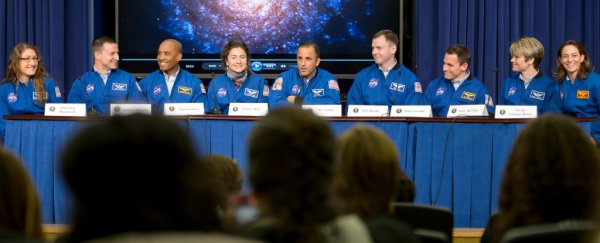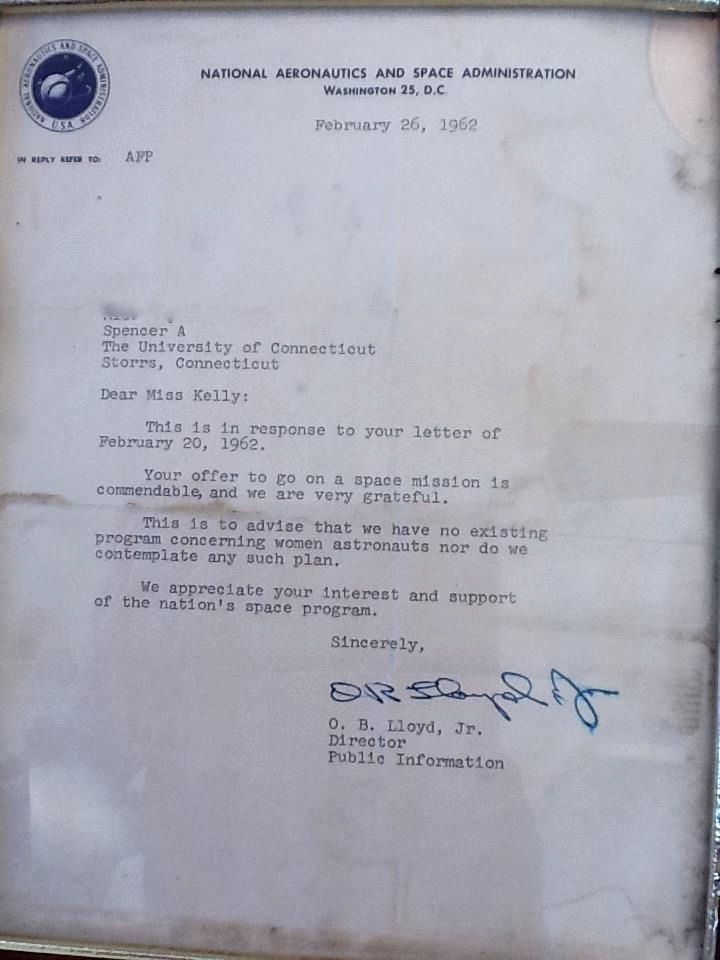Last year was pretty incredible for space exploration, with (among many other notable achievements) NASA announcing its plans to land humans on Mars in the 2030s, and then breaking the Internet when they put a call out for people to sign up.
But what you might not know is that the latest class of NASA astronauts, recruited in 2013 and already in training, will also be candidates for the first trip to Mars, and for the first time in NASA history, 50 percent of them are female.
It's well established by now that women make kick-ass astronauts (hello Sally Ride and Valentina Tereshkova), so that statistic shouldn't be particularly exciting or notable.
But given the fact that, as of 2011, females still only hold 24 percent of science, technology, engineering, and mathematics jobs in the US, it's a pretty huge deal, and it makes us even more hopeful about the future of Solar System exploration.
Would you go to Mars? Meet the four women astronauts who can't wait to go: https://t.co/NvlyzmyUfr Via @glamourmag pic.twitter.com/BRjoyZX1C3
— NASA (@NASA) January 7, 2016
"We never determine how many people of each gender we're going to take, but these were the most qualified people of the ones that we interviewed," Janet Kavandi NASA's deputy director at the Glenn Research Centre explained in a Google Hangout when the 2013 class was announced.
The class of is made up of eight recruits in total - Josh Cassada, Victor Glover, Tyler Hague, Christina Hammock, Nicole Aunapu Mann, Anne McClain, Jessica Meir, and Andrew Morgan - selected from a pool of around 6,100 applicants. That's a fierce 0.0013 percent success rate.
The application process alone took 18 months of rigorous medical and psychological testing, and the recruits are now going through two years of training before they'll officially join NASA's 46 currently active astronauts.
But what's really cool is that they're the first class to be candidates for the mission to Mars. "If we go to Mars, we'll be representing our entire species in a place we've never been before. To me it's the highest thing a human being can achieve," McClain told Ginny Graves in an exclusive interview for Glamour magazine at the end of last year.
That training, as you can imagine, is pretty intense, with the candidates learning how to fly T-38 supersonic jets, practicing walking around underwater in spacesuit that weigh 181 kg (400 pounds), and surviving what's called the vomit comet, which simulates weightlessness through freefall.
They're also being taught a whole bunch of general survival skills that might help them cope with the myriad things that could go wrong on the Red Planet, where the average temperature is –55 degrees Celsius (–67 F), there are giant dust storms, and astronauts will constantly be bombarded with cancer-causing ionising radiation.
"It's not like the Moon; that's a three-day trip," Jason Crusan, director of advanced exploration systems at NASA told Glamour. "When you go to Mars, you're going. You can't abort."
The journey itself will be about 56 million kilometres (25 million miles) one way, which will take between six to nine months. But the pay-off for any astronaut who makes the grade will be worth it, if only to be able to earn the title of one of the first humans to ever put a boot-print on the Red Planet.
"Mars can teach us so much about the past, present, and future of our own planet," said Meir. "Trying to understand our place in the universe is what drives me more than anything."
"From space, you can't see borders. What you see is this lonely planet," added Mccain. "Here we all are on it, so angry at one another. I wish more people could step back and see how small Earth is and how reliant we are on one another."
We couldn't agree more, and we can't wait to see the talent that's selected in the next class of astronauts, for which applications are still open.
What a relief things have changed since the 1960s, when NASA wrote this rejection letter to a hopeful astronaut.

